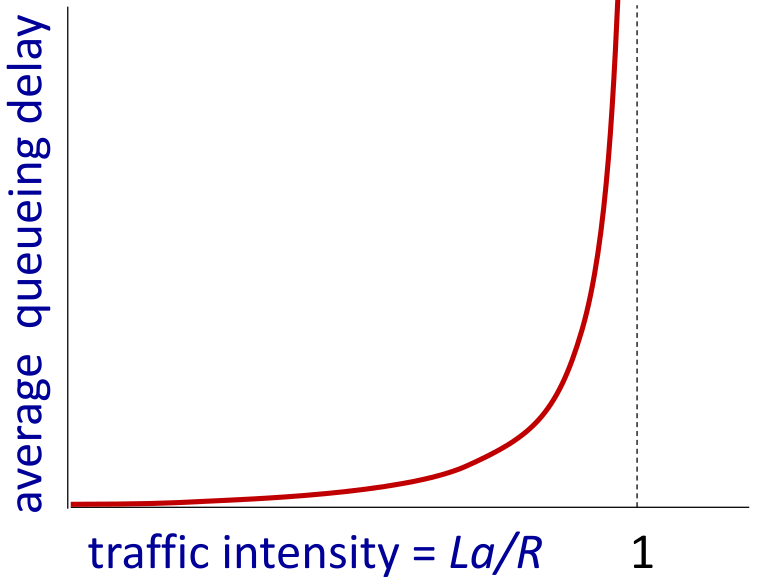Performance - Loss, Delay & Throughput
Delay
There are several types of delay that a packet can experience:
- Nodal Processing ($d_\text{proc}$)
- Checking for bit errors.
- Determining the output link.
- Generally < 1 ms
- Queuing Delay
- Time waiting at output link for transmission.
- Depends on the congestion level of the router.
-
Transmission Delay
\[d_\text{trans}=\frac L R\]- $L$ - Packet length in bits.
- $R$ - Link transmission rate in bps.
-
Propagation Delay
\[d_\text{prop}=\frac d s\]- $d$ - The length of the physical link.
- $s$ - The propagation speed on the physical media ($~2\times 10^8$ ms).
This comes together to give the total packet delay of:
\[d_\text{nodal} = d_\text{proc} +d_\text{queue} +d_\text{trans} +d_{prop}\]Traffic Intensity
This is calculated using the following equation:
\[\text{Traffic Intensity}=\frac{La} r\]- $R$ - Link bandwidth in bps.
- $L$ - Packet length in bits.
- $a$ - Average packet arrival rate.

Queuing delay increases exponentially with the traffic intensity.
For small values then the delay is small but if the delay is >1 then packets are dropped.
traceroute
This is a program that can measure the delay to all the ‘hops’ on a packet’s journey.
Throughput
Throughput is the rate at which bits are being sent from sender to receiver. This can be measured as:
- Instantaneous - Rate at a given point in time.
- Average - Rate over a longer period of time.
The throughput is limited by the slowest link on a packet’s path.